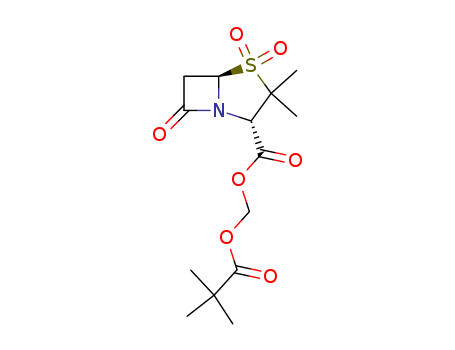| Penicillin G sodium salt Chemical Properties |
| Melting point |
209-212°C |
| alpha |
D24.8 +301° (c = 2.0 in water) |
| density |
1.41 |
| refractive index |
300 ° (C=2, H2O) |
| storage temp. |
Inert atmosphere,2-8°C |
| solubility |
H2O: 100 mg/mL Solutions should be filter sterilized and stored at 2-8°C for 1 week or at -20°C for extended periods. Solutions are stable at 37°C for 3 days. |
| form |
powder |
| color |
colorless or white |
| PH |
5.5-7.5 (3% in H2O) |
| Water Solubility |
5-10 g/100 mL at 25 ºC |
| Merck |
14,7094 |
| BRN |
3834217 |
| Stability: |
Stability Stable, but incompatible with a wide variety of materials, including acids, oxidizing agents, heavy metals, alcohols, glycerol, thiomersal, many surface-active agents, alkalies, peroxides, reducing agents, lanolin, glycol, sugars, amines, iodine, iodides, thiols. Hygroscopic. |
| CAS DataBase Reference |
69-57-8(CAS DataBase Reference) |
| EPA Substance Registry System |
Penicillin G sodium (69-57-8) |
|
| |
| Uses |
Sodium salt of Penicillin G, an antibacterial, antimicrobial medication. Used in the treatment of pneumococcus and streptococcus bacterial infections. |
| Definition |
penicillin: An antibiotic derivedfrom the mould Penicillium notatum;specifically it is known as penicillin Gand belongs to a class of similar substancescalled penicillins. They producetheir effects by disruptingsynthesis of the bacterial cell wall,and are used to treat a variety of infectionscaused by bacteria. |
|
|


 Diamondsupplier
Diamondsupplier 




